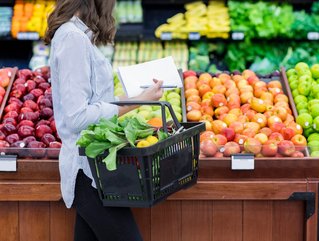How tech is enhancing fresh retailers' sustainability

Millennials are projected to soon overtake baby boomers as the largest adult population group, bringing demands for sustainability to the front of every grocery checkout aisle.
Fresh retailers, or retailers in the business of providing highly perishable foods like fresh produce and meat to consumers, can strengthen sustainability efforts and combat the 1.3bn tonnes of food wasted annually with the support of artificial intelligence (AI) and machine learning (ML) solutions. AI and ML not only help fresh retailers reduce their environmental footprint through waste reduction, but the technologies allow them to respond to market conditions in real-time and offer more personalised assortments in line with the core values of their key consumers, resulting in more efficient and eco-friendly supply chains.
So what does this look like in practice? Here are three ways AI and ML can enhance sustainability for fresh retailers:
1. Waste reduction
Food waste is a worldwide issue. Roughly one-third of food produced for human consumption is wasted, which releases approximately 3.3bn tonnes of carbon dioxide into the atmosphere. Fresh retailers that take action to eliminate food waste and reduce carbon emissions help not only the environment, but their bottom lines as well.
By introducing AI and ML to merchandising and supply chain processes, such as store replenishment and price optimisation, grocers can cut down on wasted product through reduced out-of-stocks, shortened shelf gaps and more accurate demand forecasting. For example, automated markdown recommendations can help fresh retailers reduce spoilage and combat waste by more quickly moving perishable items off store shelves. By carrying the right amount of inventory, the risks of highly perishable foods going to waste drops, and customer demand can be satisfied without lost sales.
2. Real-time response to market conditions
Demand and supply are constantly fluctuating, making them difficult to predict. No grocer can foresee contamination or disease, like the banana fungus that has been ravishing supply across the globe; however, fresh retailers can use the data available to them to proactively enhance their supply chains, make informed decisions and avoid wasted efforts and resources.
AI automatically evaluates hundreds of demand factors that influence consumer decisions including weather, promotions, holidays, and the day of the week. Deep insight into the connections between these different influencers creates probabilistic forecasts that take all possible scenarios into account. This provides grocery retailers with the most sustainable solutions.
Ultimately, embedding AI and ML into core supply chain and merchandising processes enhances sustainability by decreasing time and resources spent responding to dynamic market conditions and customer preferences.
SEE ALSO:
3. Satisfy evolving customer preferences
Customer buying patterns, and the external factors around them, give fresh retailers the data points they need to stock shelves optimally. Everything from consumer sentiment to what day of the week consumers typically shop create a whirlwind of complexity that fresh retailers can better understand with AI and ML to maximise satisfaction while minimising their global footprint.
Fresh retailers can respond to changing demand factors based on their real-time relevance thanks to AI’s highly automated algorithms. The value of AI and ML lies in their cognitive learning abilities to draw correlations between these disparate sets of data, and use them to plan ordering, replenishment and shipping activities accordingly. Aligning store ordering plans with consumer preferences through the help of AI and ML reduces waste, drives sustainability and increases customer satisfaction.
For example, the explosion of non-milk based dairy products, like almond, soya and coconut milk, is driving challenges with predicting assortment and sales volumes for grocery retailers. Forecasting and replenishment solutions infused with AI and ML enable intra-day replenishment of dairy items in high-volume regions, optimising supply with date sensitive information.
Creating a sustainable future
With complexities mounting for fresh retailers in the form of increased competition, high consumer expectations and their changing preferences, finding ways to deliver on all fronts without sacrificing quality is critical. Consumers’ growing desire to better the planet by narrowing their carbon footprint is changing the way fresh foods make their way into our homes. Advanced technologies including AI and ML solutions can give fresh retailers the advantage they need to compete in such a fast-moving industry.






